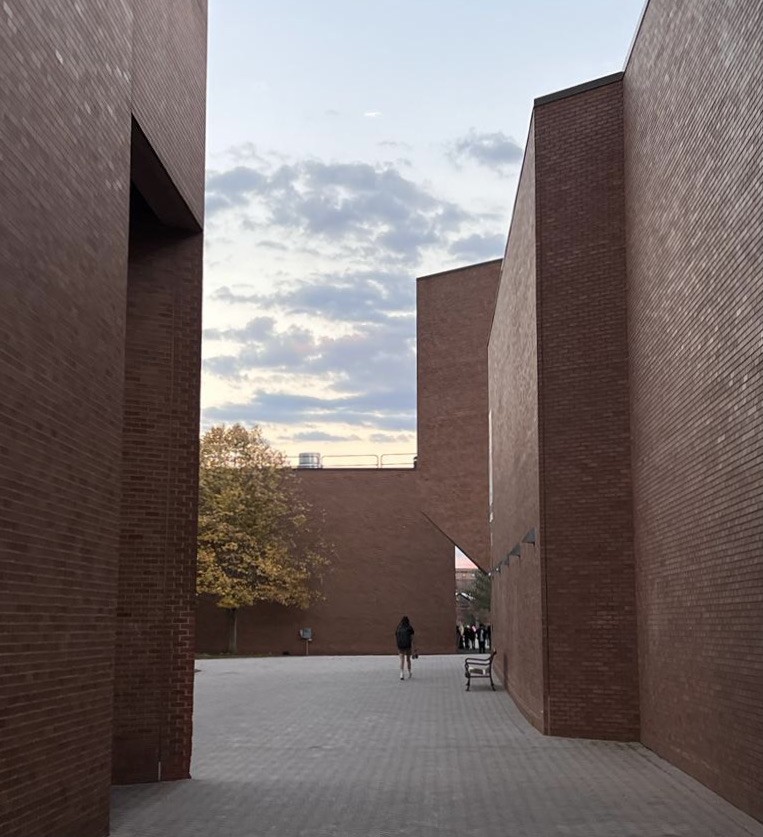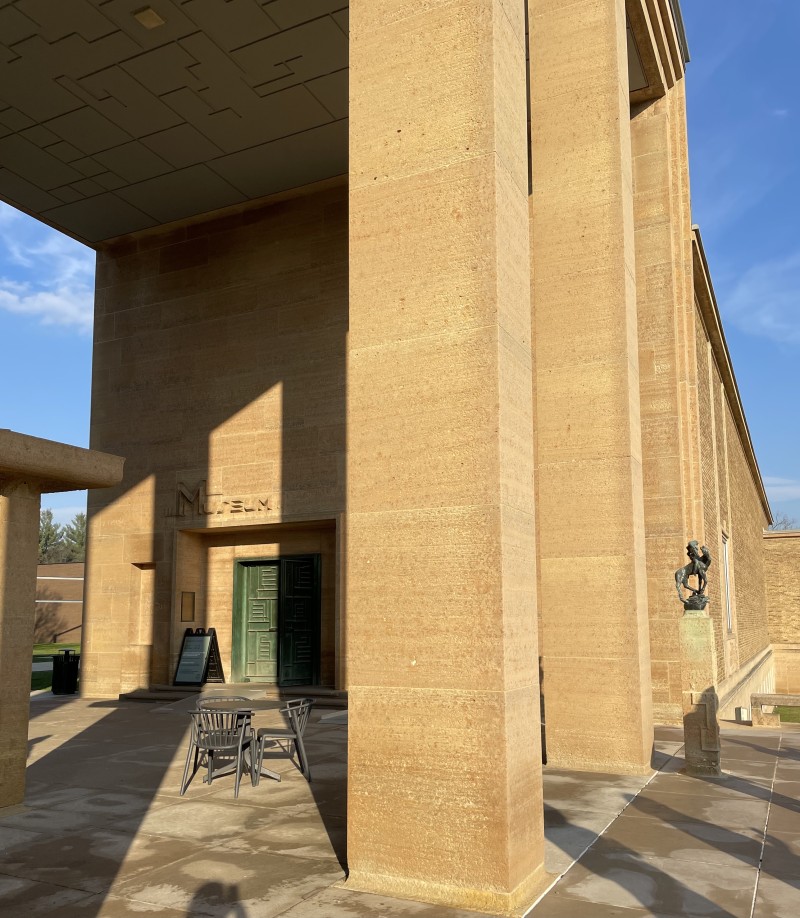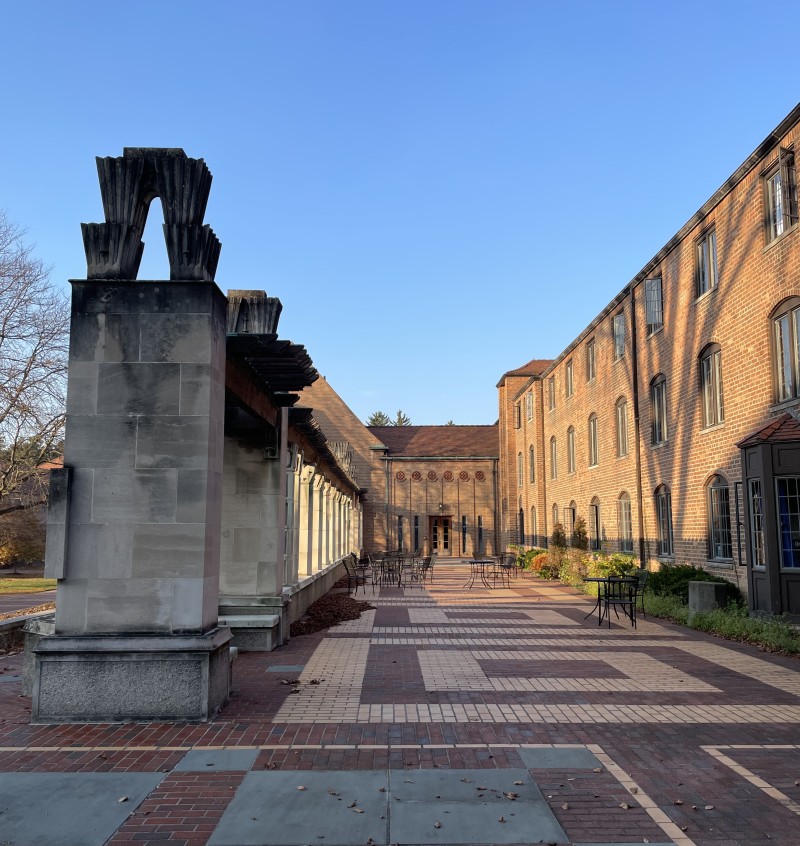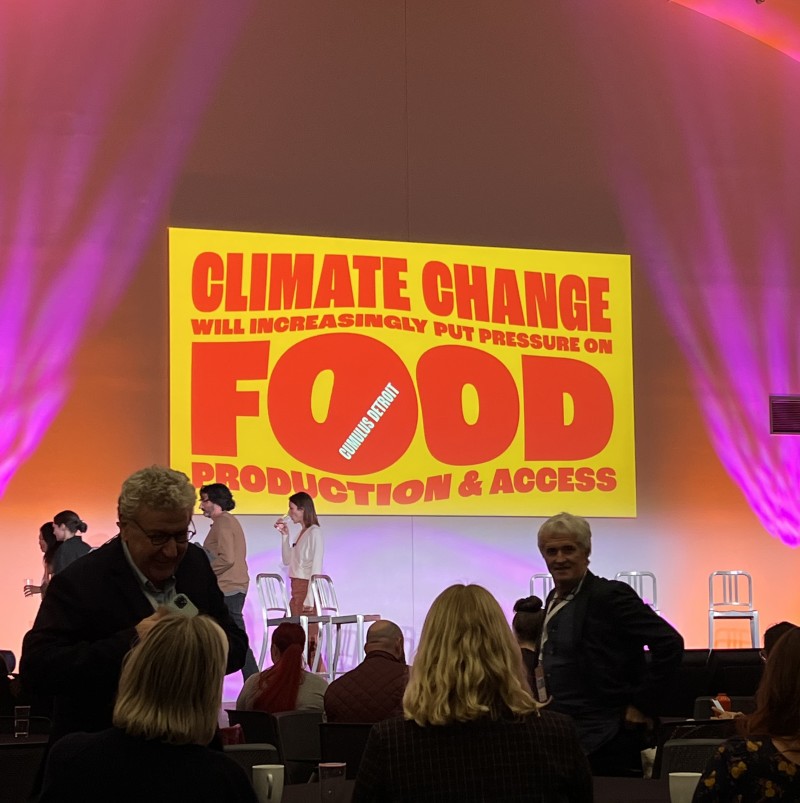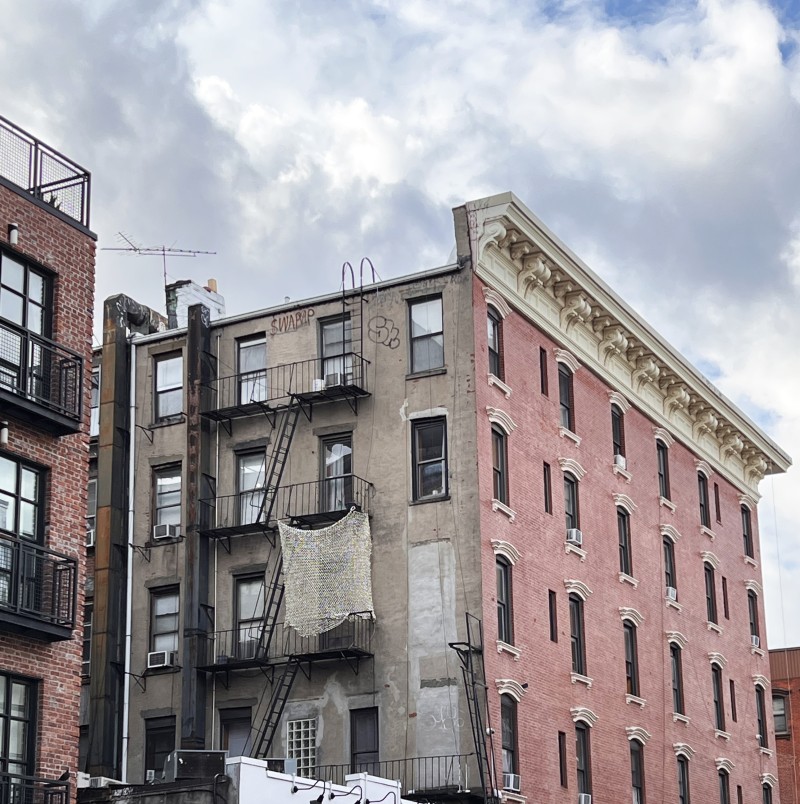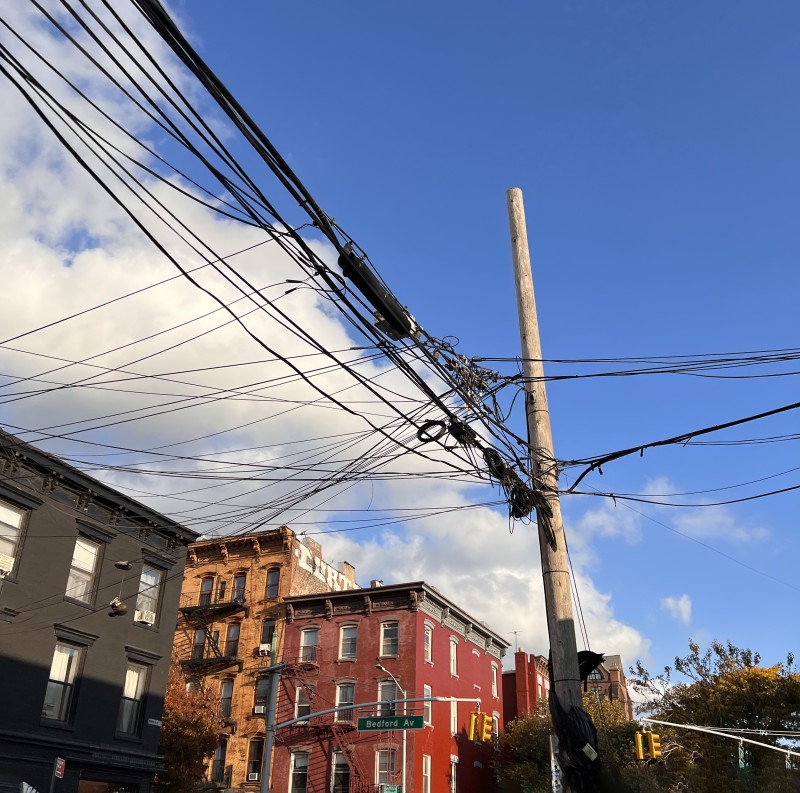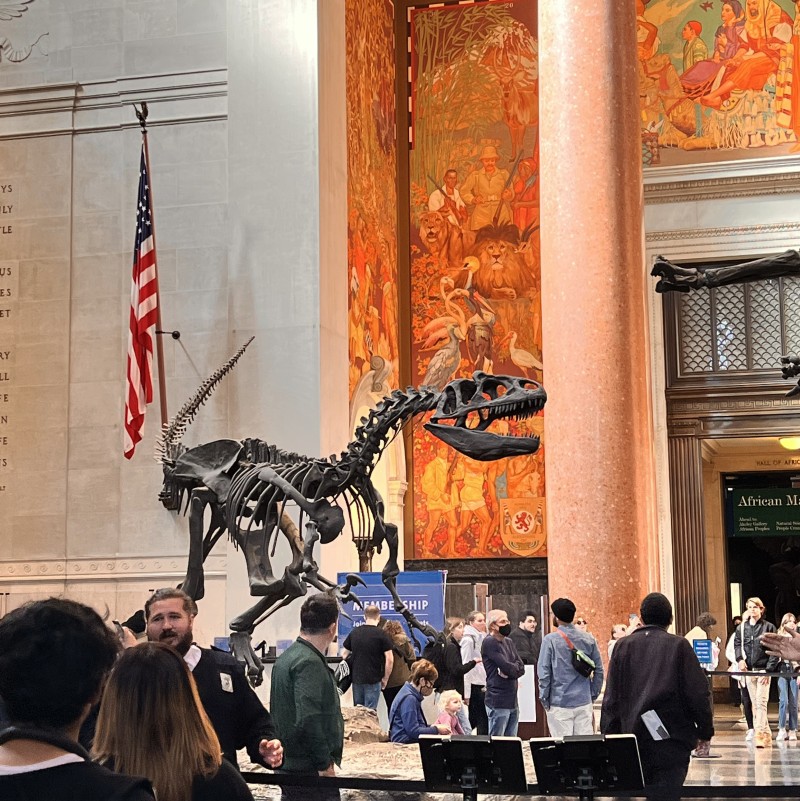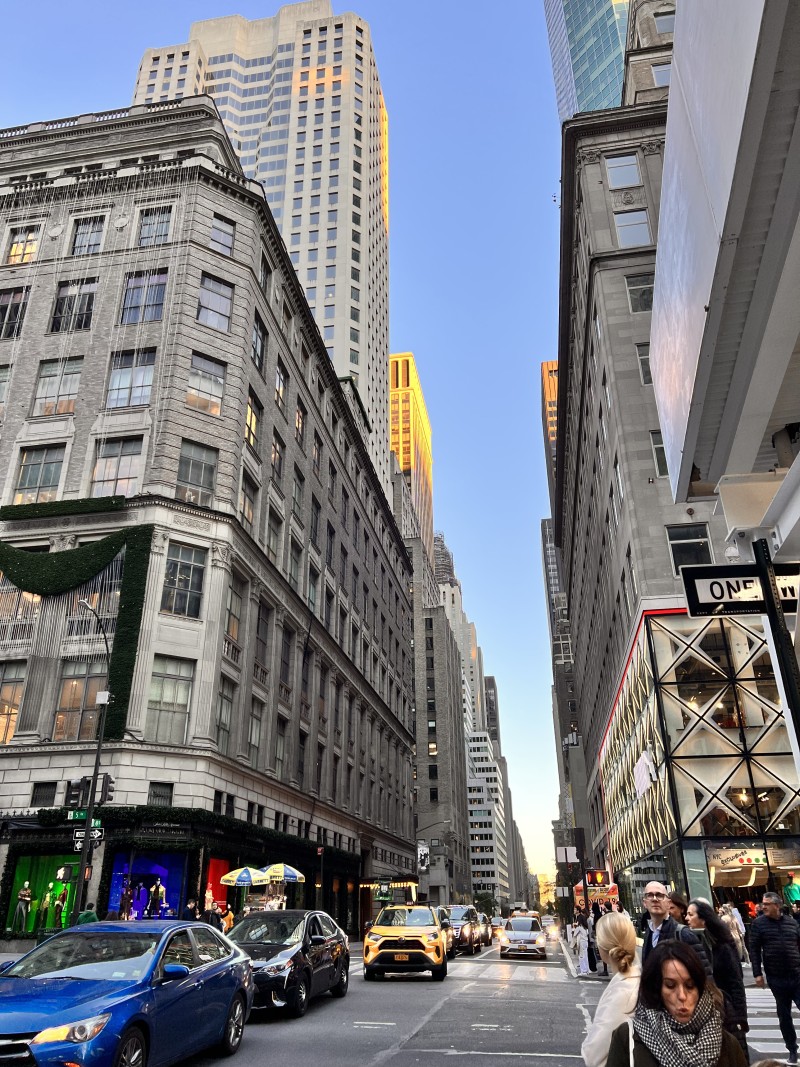Log Book
Hello Rochester, hello RIT
Our first day in Rochester begins with some final preparations for tomorrow’s Workshop at Rochester Institute of Technology. Later that day, Josh Owen, the Director of the Vignelli Center for Design Studies at RIT, invited us to his home. After …
Our first day in Rochester begins with some final preparations for tomorrow’s Workshop at Rochester Institute of Technology. Later that day, Josh Owen, the Director of the Vignelli Center for Design Studies at RIT, invited us to his home. After a quick espresso break, he drove us around the city and showed us some lovely neighborhoods. It is great for us to hear and to learn about Rochester’s history and American culture. Josh also gave us some great food recommendations and lets us know which places are worth visiting during our stay. Right after the tour, the three of us drove to RIT. Since the campus is quite large, about 1300 acers, and everything is new to us, we appreciate Josh taking the time to show us around. We visited the industrial design department and the classroom where we will hold the workshop. In addition, he took us to see a special shop on campus that sells work by students, alumni, and faculty. Moreover, Josh gave us some tips on where to get something tasty to eat during the week of the workshop. Of course, we also saw the Vignelli Center for Design Studies, which was established in 2010. It was designed by Lella and Massimo Vignelli, houses the archives of the two designers, the office of the director of the Vignelli Center, which is Josh’s office, and also our Future Design Ambassadors office. Here we presented Josh with some souvenirs from Germany, like self-made notebooks, special for the members of the "Future Design Embassy", as well as a door sign for the RIT Ambassadors office.
On the tour of the campus, Josh tells us that before the University moved to its current location, to Henrietta, RIT was located right in downtown Rochester. Because RIT was growing so much, they relocated farther away from downtown to an area surrounded by woodlands in 1968. Since almost all the buildings are constructed of red bricks, people often refer to the campus as “Brick City”. More recent additions to the campus can be distinguished by the architecture. To fit into the image of the campus, these pick up the traditional brick color. What we really enjoyed was seeing the two great murals by Josef Albers that Josh took us to see. They are located in the lobby of George Eastman Building.
Next, we returned to Josh's house, there we met his very welcoming family. Over a delicious meal prepared by his wife, we had enjoyable and interesting conversations. What a great way to end our first day in Rochester.

Road Trip from Detroit to Rochester
After a short night due to the Cumulus farewell party, we woke up to catch the bus that took us to the Detroit airport. There we should pick up our rental car that we want to drive all the way …
After a short night due to the Cumulus farewell party, we woke up to catch the bus that took us to the Detroit airport. There we should pick up our rental car that we want to drive all the way from Detroit to Rochester, our new home for the following week. Unfortunately, we ran into some complications with the rental car company. Three hours later we figured everything out and we could finally get on the road. In the beginning the landscape reminded us of the landscape back home in Germany when you drive on the “Autobahn”, but as we come closer to Rochester it changes a bit. Before it got dark the sun decided to come out for a while, dipping the whole nature around us in a warm yellow and orange color. We particularly enjoyed the view of Lake Erie while driving on the highway. After around seven hours on the road we finally made it to our Airbnb in Rochester. Entering the house, we felt right at home, especially due to our super welcoming host Nell and her sweet dog Dewey. We quickly unpacked and grabbed something for dinner. As soon as we were done eating we fell asleep, exhausted but happy and excited for the next few days to come.
Cumulus Conference Detroit - Day 3 The Henry Ford
After such an inspirational and fun trip to Cranbrook yesterday, we were really excited for today's trip to the museum “The Henry Ford”. Before we went on the cultural trip we were able to listen to two great paper sessions. …
After such an inspirational and fun trip to Cranbrook yesterday, we were really excited for today's trip to the museum “The Henry Ford”. Before we went on the cultural trip we were able to listen to two great paper sessions. The first one was held by Clémence Montagne and Frederique Krupa from L’École de Design Nantes Atlantique, France, dealing with the very relevant question: “Can design be sustainable within capitalism?” In order to address the question the speakers presented a Collective Interest Matrix that is intended for positioning design interventions. The other paper session was held by Heidrun Mumper-Drumm and Jonathan Abarbanel, both from the ArtCenter College of Design, in Pasadena, CA, about “Designing for a Livable Climate: Adaption and the Window of Opportunity”. They are certain that designers and their work play a key role towards a climate stable future. Thus Mumper-Drumm and Abarbanel collaborated and designed courses for students dealing with design for sustainability. While building an 8-term course of study, leading to a Bachelor of Science in industrial design, the speakers incorporated their own experiences, research and tools. Both claim that graduates are able to implement sustainability, adaptability and regenerative systems in their work.
Thereafter we rushed to the bus that took us to the historic museums complex “The Henry Ford” that covers over 220 acres in Dearborn, Michigan. The museum houses one of the largest collections in the country and shows life in America over the past centuries. Its main focus is preserving items that represent the Industrial Revolution. The campus, which consists of The Henry Ford Museum of American Innovation, Greenfield Village, Benson Ford Research Center, Giant Screen Experience, and, off-site, the Ford Rouge FactoryTour, is Michigan’s leading cultural tourism destinations and as we entered the museum and got a glimpse of the exhibition we immediately knew why.
Our tour started in the back of the building. Thus, the entire group made its way through the 12 acre hall and even though we have experienced many different exhibitions, we were amazed by this space and all the exhibits on display. It was just overwhelming. We passed the "Wienermobile" of Oscar Mayer (1950) for example, and the bus in which Rosa Parks was arrested in 1955, for refusing to give up her seat to a white man. We got to see the "Sunshine Special", the official state car, which was used by the US President Franklin D. Roosevelt, and the "Dymaxion House" designed by the architect Buckminster Fuller. Besides, we were able to have a look at the car "SS-100-X", in which the US President John F. Kennedy was killed in 1961. Further we were able to have a glance at "DeWitt Clinton" the first working steam locomotive built for service in New York state (1831), and also the McDonald's Restaurant Sign from 1960. Of course, with such a large amount of objects, all of which have contributed so enormously to the history of mankind, it is clear that we can not examine all the pieces in detail. Nevertheless, the first part of the tour was only about steam engines. As the museum itself reports, it was Henry Ford who collected and documented “the evolution of steam power with a large collection of historically and personally significant steam engines.”
For the second part of the tour, we were led into the archives of the museum. Even though there are already more than 20,000 artifacts on display at the museum, The Henry Ford has more than 250,000 objects in its archives. The entire history of the museum, in fact, goes back to the inventor and automobile pioneer Henry Ford, as its name already suggests. Born in Michigan in 1983, the founder of the Ford Motor Company became interested in collecting as early as 1914. Even though he soon became one of the wealthiest and most powerful men in the industrial world, he never forgot the values of his rural farm life. Shortly after he was collecting items from ordinary men, items associated with his heroes and his own past, as well as examples of industrial progress. “Henry Ford had collected a slice of the American past unmatched in size and scope. After Ford’s passing in 1947, Museum staff both honored and expanded upon his collecting legacy. Many items continued to focus on technological progress and everyday life.”
The halls of the archive are tremendously large and there are shelves everywhere with countless objects stored within. In addition to numerous toasters, from a wide variety of decades, we were able to admire various spindles, slot machines, automobiles and chairs at the archives. They constantly acquiring new artifacts since “telling history through artifacts is what we at The Henry Ford do.” Our group was able to look at newly purchased items that have yet to be photographed and cataloged. The mission or the purpose of The Henry Ford with its authentic artifacts is to show people the history and evolution of a wide variety of objects. The museum believes the artifacts are a unique opportunity to learn from them, to use them as inspiration to create a better future: “The Henry Ford provides unique educational experiences based on authentic objects, stories, and lives from America’s traditions of ingenuity, resourcefulness, and innovation. Our purpose is to inspire people to learn from these traditions to help shape a better future.” The archive really is a dream for anyone interested in design and its evolution and we enjoyed every second of it!
.
.
.
In case you are interested, the museum has been progressively digitizing its collection since 2010. To take a look at the digital archive, click on the following link: The Henry Ford Digital Collections
Cumulus Conference Detroit - Day 2 Cranbrook
Our day at Cumulus started with several different paper sessions. One of them was held by Jaron Rowan from Centro Universitario de Diseño de Barcelona. He talked about the challenges that design research and design practice faces while working with …
Our day at Cumulus started with several different paper sessions. One of them was held by Jaron Rowan from Centro Universitario de Diseño de Barcelona. He talked about the challenges that design research and design practice faces while working with ideas that emerge from the debates around posthumanism.
After the paper sessions we jumped on the bus that took us to our field trip to Cranbrook. Cranbrook was founded in 1904 by George and Ellen Booth and is one of the world’s leading centers of education, science, and art today. It is located on 319-acre in Bloomfield Hills, Michigan and consists of the Cranbrook Archives, Cranbrook Academy of Art, Cranbrook Art Museum, Cranbrook Center for Collections and Research, Cranbrook House and Gardens, Cranbrook Institute of Science and Cranbrook Schools. Eliel Saarinen, the Finnish architect and father of Eero Saarinen, the renowned architect and industrial designer, caught Booth's attention through his son Henry, who was one of Saarinen’s architecture students. In 1925 Booth made Saarinen the chief architect for the campus. He designed Cranbrook School for boys, Kingswood School for girls, Cranbrook Institute of Science, Cranbrook Academy of Art, and Cranbrook Art Museum and Library. The Finnish architect also taught at Cranbrook and acted as president of the Cranbrook Academy of Art from 1932 to 1946. Charles and Ray Eames were amongst his students, eventually Saarinen influenced their design.
As we approached the campus our tour guide Kevin Adkisson was already waiting for us. He is a Curator and assists in the preservation, interpretation, and programming across the many buildings and treasures of Cranbrook. His tour was filled with super interesting facts and information about the history of Cranbrook, its architecture and art spread all around campus. The grounds of the Campus are beautiful, especially in the golden light of a warm autumn day as it was today. We tried to soak up as much as possible of this inspirational atmosphere. The first stop of the tour was the Orpheus Fountain, located right next to the Cranbrook Art Museum. It was casted out of Bronze in 1937 by the Swedish sculptor Carl Milles. The fountain shows a circle of eight life-size figures. They can represent shades or souls from the Underworld, or “people listening to music” as the sculptor himself said. One of the figures can be identified as Beethoven. The figure raises his arms in a gesture of despair since he is deaf and cannot hear Orpheus’ music.
The next stop was the Cranbrook Art Museum which is housed in the same building as the Cranbrook Academy of Art. The museum features contemporary art, craft, design and architecture with a special focus on artists from Cranbrook Academy of Art and Design. Their permanent collection includes work by Charles and Ray Eames, Carl Milles and Andy Warhol.
Next, Kevin led us to the Cranbrook Academy of Art, one of the nation’s top-ranked schools for art, architecture and design. They offer eleven different departments such as 2D Design, 3D Design, 4D Design, Architecture, Ceramics, Fiber, Metalsmithing, Painting, Photography, Print Media and Sculpture. Alongside the Saarinens Cranbrook's Academy of Art brought forth some more outstanding artists, architects and designers, like Daniel Libeskind, Ray and Charles Eames, Florence Knoll, Donald Lipski, Duane Hanson, Lorraine Wild, and Hani Rashid, to name only a few.
We also had the chance to see the Cranbrook School for Boys, which opened in 1927, and is still in use today. While designing the complex Saarinen chose to make the buildings out of brick. The roofs are made up of red tiles. In 1929 the Dining Hall of the school was completed. Kevin brought us inside the Hall, which is flooded with natural light through the large windows. He lets us know that not only the building was designed by the Finnish architect, but also everything else inside the building was designed by the Saarinen family. This includes the tables, chairs, dishware and also the ties that had to be worn by the boys for dinner were created by Saarinen. Seeing the original tables and chairs in the Dining Hall, which are still in use today, feels really special to us. A highlight is definitely the small decorative ornament of the chair. It shows a crane and was designed by Eero Saarinen. Some of them are missing since students are poking them out as Kevin mentioned. Due to our tight schedule we soon moved on, following Kevin to the Observatory Tower with the Quadrangle Fountain in the foreground. Lastly, we are able to see some of the students' studio spaces where they have access to 24/7. The spaces are all unique, and show some of the work and work process of the students which for us is super interesting to see. Every inch of the campus reflects the creative atmosphere of Cranbrook. After the visit of the studios it is time for us to head back to the bus. Seeing some parts of the incredible huge campus was an unforgettable experience and has left us with a warm and inspirational feeling.

Interview with Chrissy Levett - Creative Conscience
Chrissy Levett, Creative Director of “Creative Conscience”, who delivered a compelling talk yesterday, on the concept of a global organization that encourages, trains and rewards creative thinking for social- and environmental impact, shares her opinions and demands to future designers …
Chrissy Levett, Creative Director of “Creative Conscience”, who delivered a compelling talk yesterday, on the concept of a global organization that encourages, trains and rewards creative thinking for social- and environmental impact, shares her opinions and demands to future designers with us in an interview:
We are all gathered in Detroit, all coming from different places. How important do you think is the cultural exchange for designers nowadays and in the future?
I believe it’s vital, diverse minds are so needed to collaborate, to share learnings, both failed and successful practices. We can do a lot virtually however occasionally and consciously we should meet in person. It’s in face to face human connection that true cultural exchanges happen.
The conference runs under the topic of "Design for Adaptation" with the main focus on sustainability in design. What does sustainability mean for you?
Great question, especially as sustainability means so many different things to different people. I’m not a fan of the word now, as I have learnt to understand ’sustainability’ is not going to get humanity and this planet into a functional place for healthy survival. Sustainability can however be a stepping stone towards regenerative design. That’s what I believe we need to focus on ‘regeneration', what can we do to build back the tragic losses that have occurred with
industrialisation?
What do you think young/ future designers can do in a world that is marked by capitalism, while their job is to create and produce products?
I suggest we all read or listen too ‘Less is more’ by Jason Hickel, that we understand the history of capitalism. That we focus on regenerative design, let’s not look to ‘growth’ or GDP. Change career paths and move into a space only focused on social and environmental impact. If you find yourself working for an organization that is producing products and services that do not serve humanity and this planet, influence that organization from within. Create and inspire with side-hassles. Volunteer at organizations that you believe in. Buckminster Fuller said “You never change things by fighting the existing reality. To change something, build a new model that makes the existing model obsolete”.
Which skills do young designers need to have in order to create products that have a true purpose?
Learn to be open and to pivot, the world is changing so fast, so learning never stops. Let go of preconceived ideas and always trying to be on the right path. Ask yourself what kind of future you want and follow the skills that will help you get there. Positive purpose comes from within, mediate, exercise and connect with nature that will serve you and your future.
Cumulus Conference Detroit - Day 1
Late in the evening of November 02, we arrive in Detroit, the largest city in Michigan and this year's host of the Cumulus Conference. Very different from New York City, Detroit is one of the largest black communities within the …
Late in the evening of November 02, we arrive in Detroit, the largest city in Michigan and this year's host of the Cumulus Conference. Very different from New York City, Detroit is one of the largest black communities within the US. (In 2020, 78.3% were African American). The city rose to become a leader in the U.S. automobile industry in the first half of the 20th century. Detroit became a metonym for the entirety of the economically as well as politically very influential car companies. The city, which is known under the title "Motor City", clearly reveals that the urban landscape is designed for automobiles in its infrastructure. The cityscape is characterized by stand-alone office and factory buildings, which are surrounded (like obelisks) by open parking areas for countless cars. Wide lanes and long highways run in a straight and structured network through downtown Detroit. Today, however, most of the city's parking lots and streets are empty. Since, as a result of the economic structural change in the automobile industry, a continual decline and loss of importance set in during the second half of the 20th century. This was exacerbated by the exodus of wealthy sections of the population and a poor education system. As a result, the city continues to experience an enormous concentration of unemployment, poverty and crime to this day.
The 2022 Cumulus Conference - titled "Design for Adaption" kicks off the upcoming conference by addressing the challenges Detroit is trying to overcome. A reconstruction and revitalization of the city, projects such as urban gardening and educational programs are planned.
The festive opening of the Cumulus Conference raises our expectations for the days to come. During the first day we listen to interesting lectures and paper sessions on sustainable design of smart products (by Ren Hui, Jiangnan University) about how we can bring technological innovation in line with the goal of sustainable product design, and how we can make the most of the opportunities of the future.
This is followed by an insightful lecture on the citizen-organized repair cafés for broken objects. The papersession calls on designers to consider the repairability and reusability already in the design process. The last paper session of the day was particularly interesting to us. A design approach that describes biodesign as a solution-oriented method for environmental issues. The author says: “I see biodesign more as a change in behavior, a shift in our perspective. We can make new "industrial" revolutions that can change human presence on earth."
The day continues with a stimulating discussion between the faculty members Heidrun Mumper Drum, her colleague and 3 female students, who discuss their experiences in design and especially their requests and improvement suggestions for the educational system. To end the day, Chrissy Levett, Creative Director of “Creative Conscience”, delivers a compelling talk on the concept of a global organization that encourages, trains and rewards creative thinking for social and environmental impact.
Coastal Walk in Williamsburgh
We begin the first stop of our last day in New York City with a visit to St. Peter's Church, which features a special landmark on our journey.
The Vignelli's created an "overall design concept" for St. Peter's Church in …
We begin the first stop of our last day in New York City with a visit to St. Peter's Church, which features a special landmark on our journey.
The Vignelli's created an "overall design concept" for St. Peter's Church in Manhattan in 1977. In keeping with their motto "from the spoon to the city" they designed the entire interior of the church. The silver ornaments for the altar and the graphics for the church, the pews and seating. They even designed the organ in collaboration with the organ builder. Unfortunately for us, we are not able to see much, since the church is currently being renovated and rebuilt. After this short encounter, we continue with breakfast in Williamsburg. Located on the East River, Williamsburg is experiencing strong industrial, cultural and economic growth. Brooklyn's Broadway became the lifeline of the neighborhood, where factories for food and household goods were established there in the late 19th and early 20th centuries. The comparatively practical and industrial flair in this area cannot be overlooked. The alternative quarter is very colorful and adorned with street art on every corner. Typical for the design of the NewYork subway are the numerous tiled pictures and mosaics. There are many exciting motifs to discover. Before we continue on our journey to the Cumulus Conference in Detroit, we take this sunny afternoon to stroll down to the coast in Williamsburg and enjoy the New York City skyline in brilliant sunshine for the last time.
Halloween in NYC
The third day almost feels like getting used to the overwhelming impressions of this incredibly huge city. The distances within the city are hardly tangible compared to European conditions. Nevertheless, the city is surprisingly well connected and you can easily …
The third day almost feels like getting used to the overwhelming impressions of this incredibly huge city. The distances within the city are hardly tangible compared to European conditions. Nevertheless, the city is surprisingly well connected and you can easily get from A to B. During the daytime we stop by the Donald Judd foundation, which unfortunately is closed. But exploring the streets of Soho is still worth it. Of particular interest are the numerous cast iron buildings that are characteristic of this district. The "Cast-Iron Historic District" in New York, located in the center of SoHo, is named after its signature buildings. They were built around 1850, and today around 250 such buildings have been preserved. Our route takes us through the financial district, across Wall Street, to the harbor with a view of the Statue of Liberty. We breathe in all the impressions of the city. Our path continues to Little Island, a relatively new public park, that showcases unique landscape design, nature and art in a unique urban oasis on the Hudson River. The landscape of rolling hills, winding pathways and dazzling views is the perfect place for a little afternoon pause. As evening approaches, the celebration of October 31st is now unmistakable. We meet countless costumed people and let ourselves be carried away by the colorful crowd. We won't miss the highlight of New York's spooky season. New York's Village Halloween Parade takes place each year on Halloween night in the Greenwich Village neighborhood of Lower Manhattan. Similar to the street carnival we are familiar with, a lively celebration of spooky characters takes place here. Extravagantly costumed people and lovingly decorated floats and figures stroll down the street to loud music. People celebrate together here regardless of their age, origin and sexuality. The highlight of the day: a Vignelli-inspired dog sweater at a souvenir store on Times Square.
Central Park & Brooklyn
Waking up in NYC and enjoying the view from our apartment window seems to reflect authentic New York City life. The centrally located accommodation in Queens allows us to reach Manhattan within a few minutes via subway. The weather is …
Waking up in NYC and enjoying the view from our apartment window seems to reflect authentic New York City life. The centrally located accommodation in Queens allows us to reach Manhattan within a few minutes via subway. The weather is fantastic and following the exploration of culinary breakfast delicacies, we make our way to the Natural History Museum. A place one knows all too well from movies and television. After an eventful morning, we are off to Central Park, the largest green space in downtown New York. A diverse gathering place of different cultures, adorned with beautiful viewpoints and an amazing amount of nature and idyll. It is a great place to escape the overwhelming and vibrant city for some time, especially when you are lucky and can enjoy the park on a warm day in late autumn. The perfect tourist weather!
However, what is remarkable in the city of unlimited possibilities is that there is a much different approach to resources than we are accustomed to in Europe. The energy crisis that affects us so strongly in Germany seems to be completely out of reach here. All of the streetlights in Central Park are lit up during daytime as well. It is interesting to discover that the surplus of - well... everything... - which characterizes this city, is reflected in things that would be unimaginable in our country today. The green idyll of Central Park is punctuated at repeated points by impressive monuments and dizzyingly high skyscrapers. The viewpoint by the Essex Center was particularly impressive. Before we head towards Brooklyn, we take the opportunity to marvel at the impressive architecture of New York Central Station. Brooklyn is a stimulating and bubbling with creativity quarter, in which there is something new to discover in every backstreet. Be it a charming little theater in a courtyard or art exhibitions through a sidewalk window. A long day's walk behind us, we finish the evening with a nighttime stroll across Brooklyn Bridge enjoying a spectacular view of the New York City skyline at night.
Arriving in New York City
After our flight, we arrived in the city of unlimited possibilities. We are guided by Massimo Vignelli's metro signs until we are struck by skyscrapers at incredible heights. The city is loud, hectic, full of people and diversity, countless smells …
After our flight, we arrived in the city of unlimited possibilities. We are guided by Massimo Vignelli's metro signs until we are struck by skyscrapers at incredible heights. The city is loud, hectic, full of people and diversity, countless smells and impressions flood in. It's just.. a lot. Our luggage dropped off at the accommodation, we head back into the vast urban jungle. It is getting late, but we take the opportunity to explore the city in the evening. Being in New York for the first time feels strange, because you have the feeling of knowing the streets, buildings and places. Everything seems so familiar from TV, news and history. But experiencing this first hand is completely different. Particularly intense is to walk across Times Square. Overcrowded, it flashes and shines in this place to an unusual extent and the countless, colorful advertisements seem as if they are trying to outdo each other. This place is the complete sensory overload, the striking representation of capitalism and the ultimate tourist magnet. An appropriate place to end the day.








